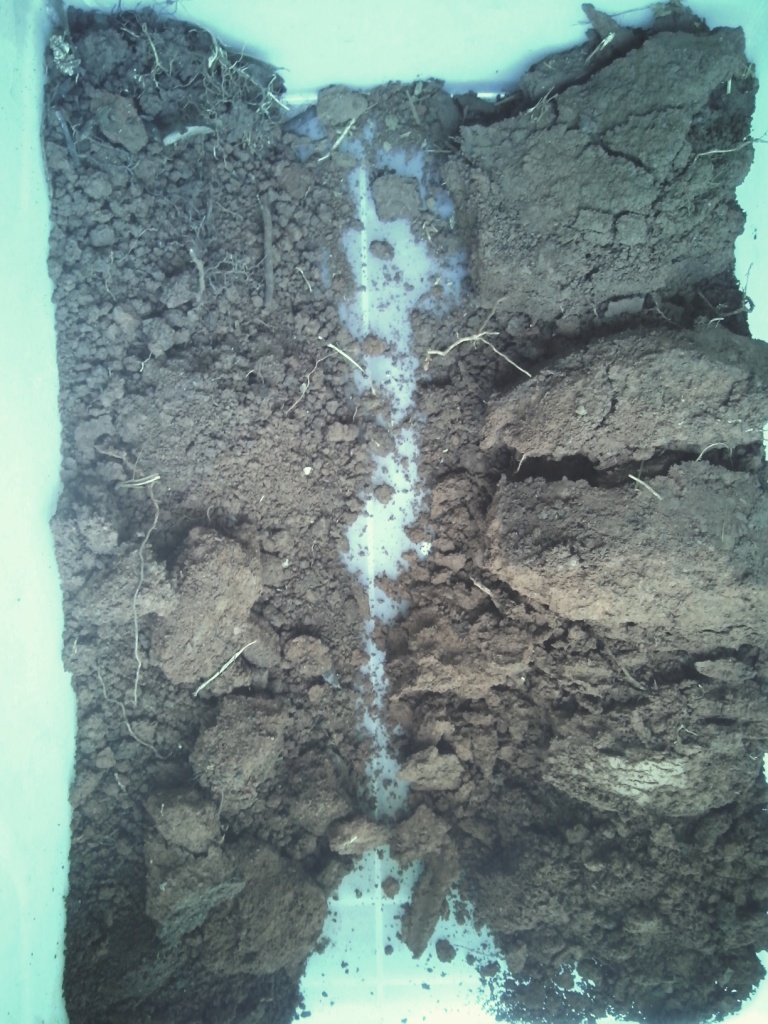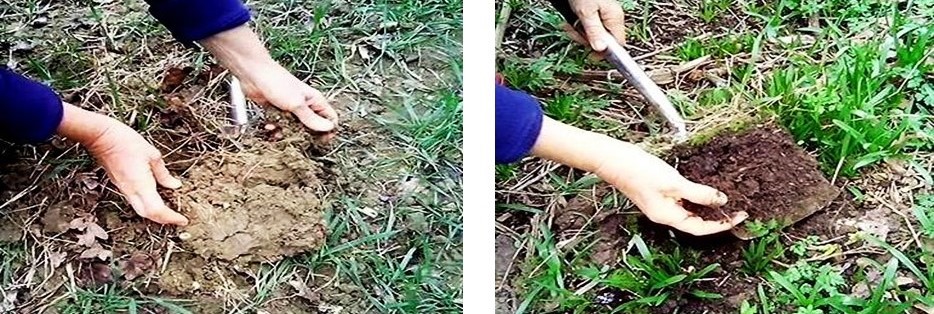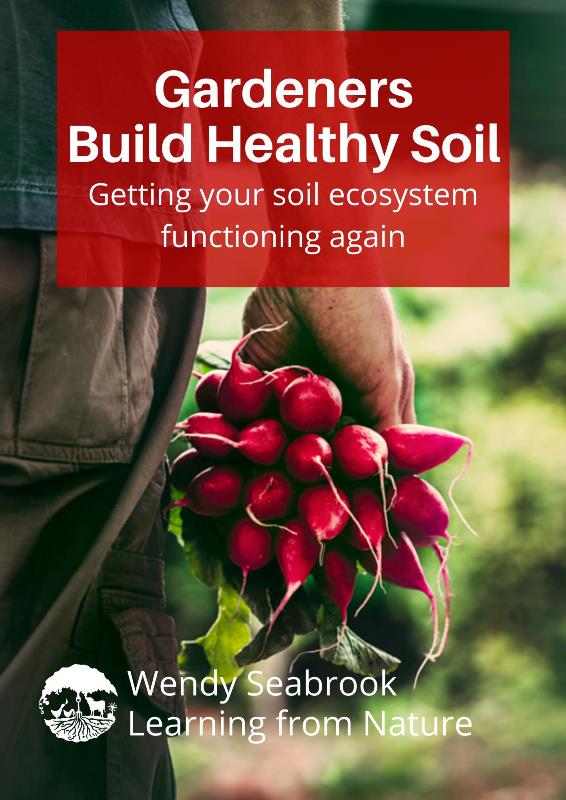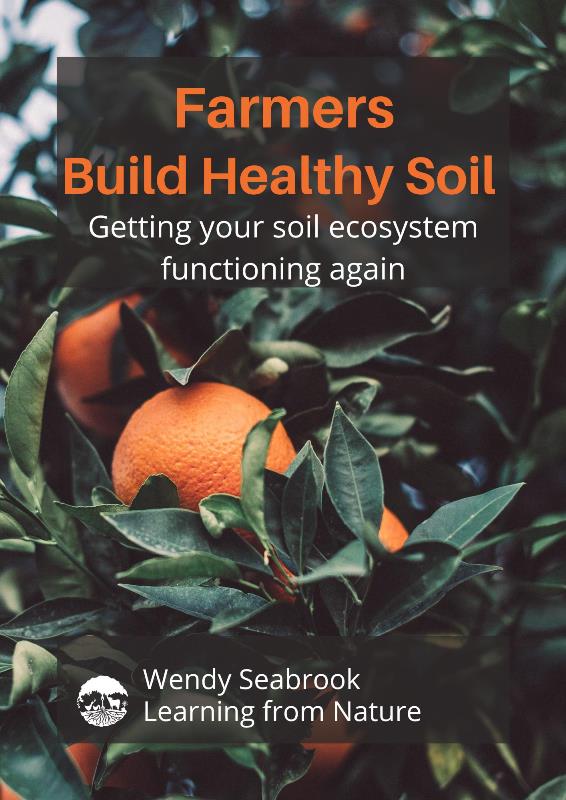The best way to build healthy soil is by mimicking how Nature maintains soils in similar growing conditions.
Let me explain by sharing a story… A few years back, some students and I compared the soil at Hill Top Farm with the soil across the road, where there was still forest.[1]
Under the forest canopy, the soil was healthy. It was easy to dig and had more earthworms, organic matter, and soil aggregates than the soil on the farm. It was a light bulb moment for me – while I had been busy spreading gypsum, mulch, and compost every year to get these advantages – the forest had done it naturally!

Hill Top Farm (right) – with the big, heavy clods
Fast track forward a few months, and I found another opportunity to compare soil, this time in a temperate climate, between an ancient woodland and an adjoining arable field in England.
Historical records suggest the ancient woodland has never been cleared, whereas the field is likely to have been cultivated annually for decades. The woodland soil was crumbly and dark, indicating loads of organic matter, carbon, and soil life. In the arable field, just 20 m away, it was light-coloured, had unbreakable clods, and was hard to dig!

Compare the soil in the arable field (left) with the soil in the adjacent ancient woodland (right)
Some people say, “That’s all very well, but we won’t feed everyone by growing in ancient woodlands.”
But that’s not the point! What’s relevant is the eco-logic of mimicking the techniques Nature uses, and where possible, the architecture of the plant communities that would naturally grow on your land to give your soil organisms a better diet.
Compare the practices the woodland ecosystem uses to maintain a functioning soil ecosystem with what happens in the arable field (see table below).
| Ancient Woodland | Arable Field |
| No cultivation of the soil, except by small mammals and soil organisms. | Regular mechanical cultivation of the soil. |
| Soil is continuously covered with living plants and organic waste materials from plants and animals. | Soil is bare for part of the year. |
| Diversity of trees, shrubs and ground covers, producing a constant and generous supply of organic waste materials. | A single layer of vegetation, usually one species. As most of the biomass gets removed during harvesting, the supply of organic waste materials is limited and short-term. |
| Extensive, diverse and permanent root mass releasing root exudates. Roots are a significant source of organic waste materials. | Shallow roots for part of the year. |
| No chemicals. | Herbicides and synthetic fertilisers are applied. |
Here’s the video showing what we can learn from Nature –
Recommended articles –
Watch this video on building healthy soil produced by Learning from Nature –
Better still, get practical advice for your garden or farm –

